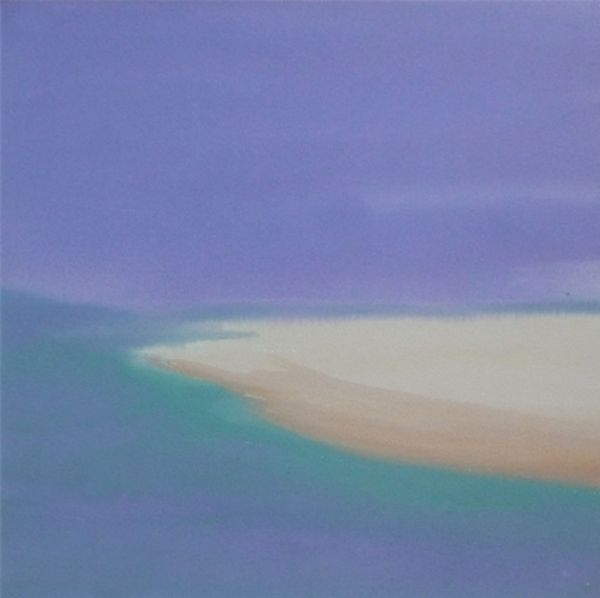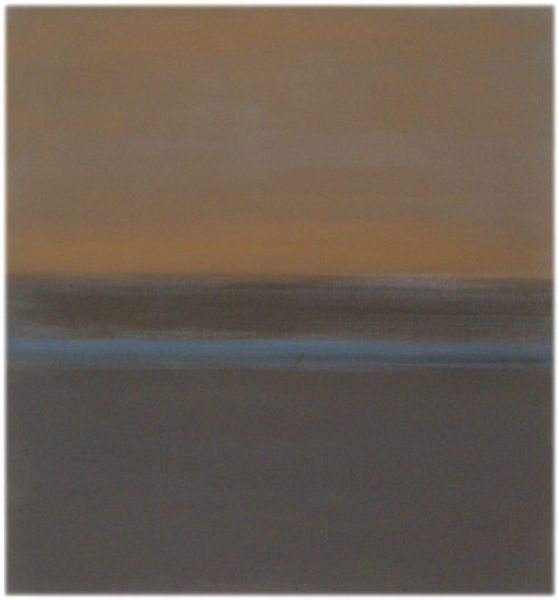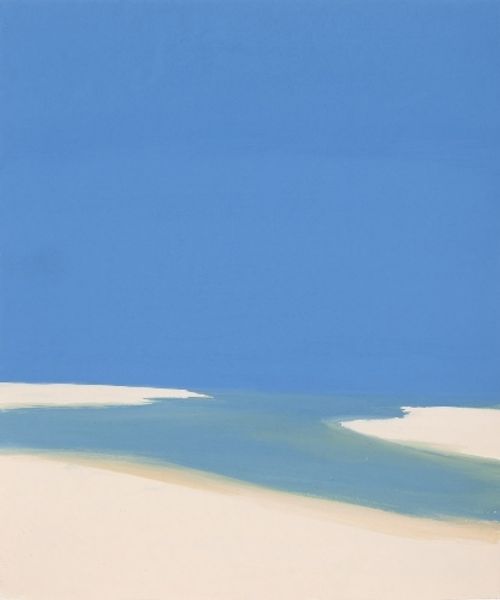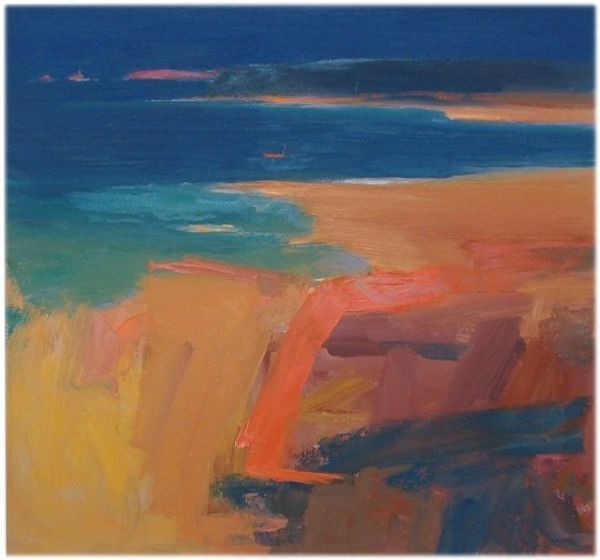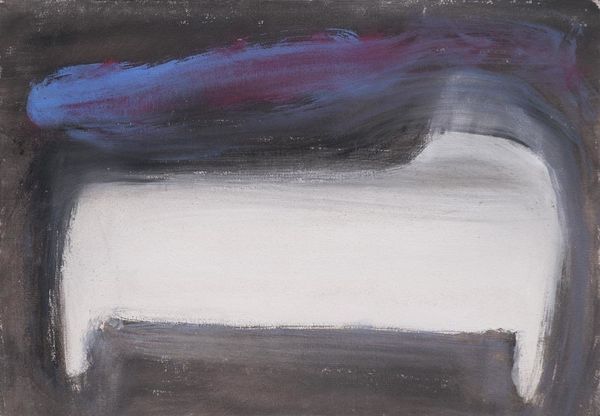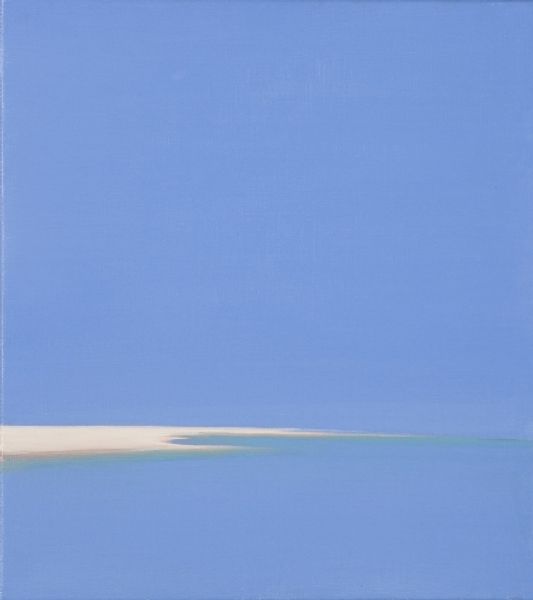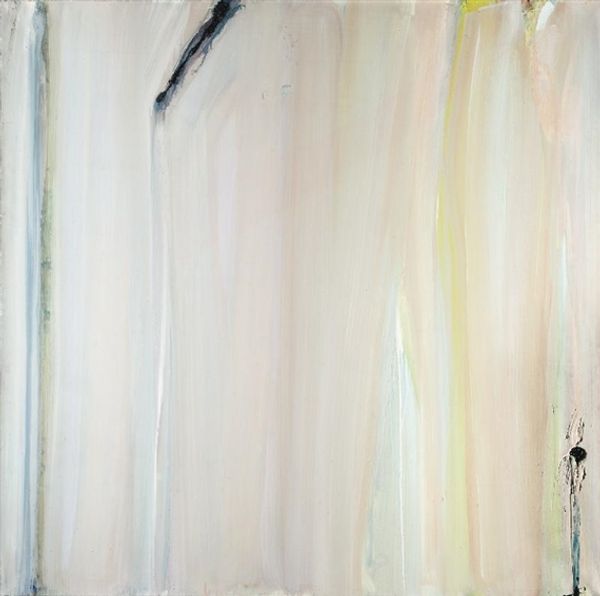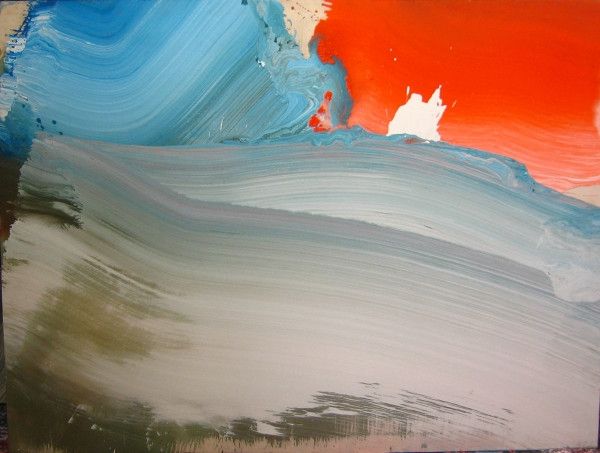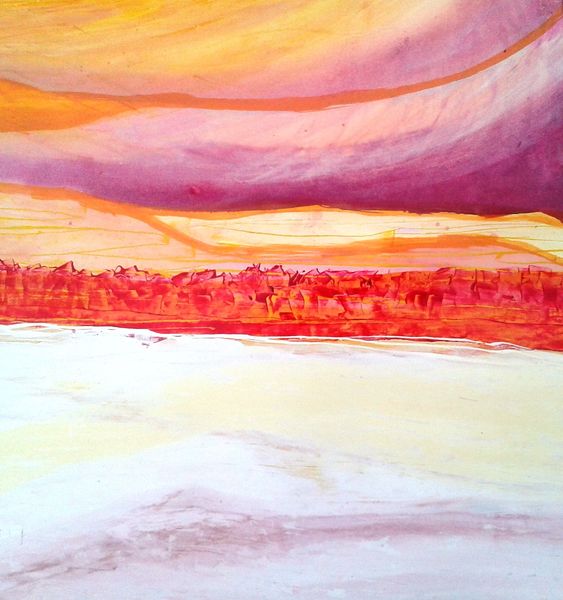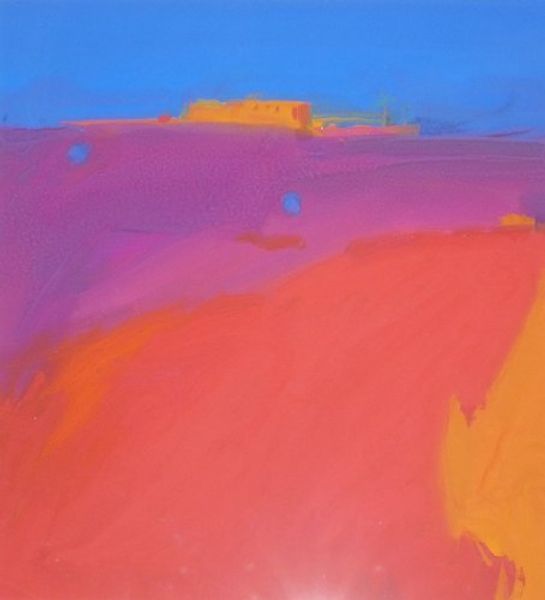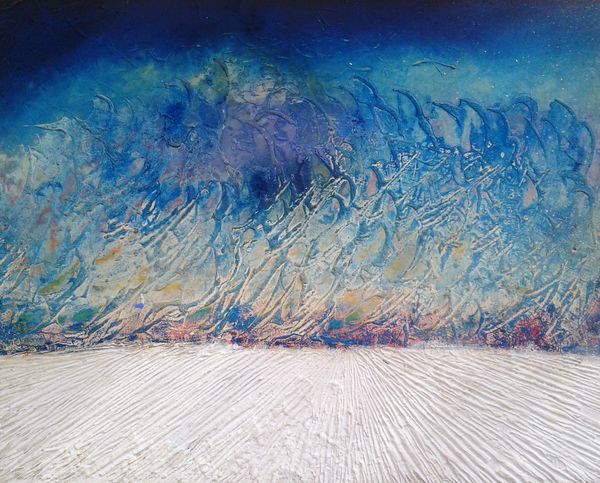
Copyright: Ed Clark,Fair Use
Curator: Here we have Ed Clark's "Chablis Blue 7," completed in 1989. It's a striking example of his work in acrylic paint. Editor: My immediate impression is of immense calm, like gazing across a vast, still lake towards the horizon. There's something deeply meditative about it. Curator: Clark was really pushing the boundaries of Abstract Expressionism, incorporating elements of Colour Field painting. Looking at his application of paint here, the layered strokes become almost sculptural, wouldn’t you say? You can almost feel the physicality of the process. Editor: Absolutely. And knowing the art historical context—that he was working during a time of intense debate about the role of abstraction, and its accessibility to broader audiences— I think this work speaks volumes. This idea of finding the universal through simplifying form—it was very resonant at the time and continues to be, seeing his approach to representation through the landscape. Curator: His unique approach to applying the paint is central here, and this has changed across his artistic phases, haven't it? How that affects how the viewers engage with it is something quite distinctive about the entire painting process in my view, like using custom-made push brooms and tools of different size to apply these wide expanses of colour and layering of shades! Editor: And let's think about how the setting where someone encounters this affects them as well: in a gallery, a private collection, or reproduced in a book—that's an act of filtering through which the art speaks, shaping how it participates in culture. The fact that we are describing it for audio just adds one more lens. Curator: Agreed, and Clark’s exploration of materiality opens up so many fascinating avenues to contemplate the artistic act, the materials, and how art shapes our experience of reality. Editor: In its own way, "Chablis Blue 7" becomes a kind of mirror, reflecting not only the landscape, but the historical moment from which it came. Curator: Well, thinking about materiality is such an important aspect, so that one leaves one questioning if it is really that “immense calm” we are experiencing if that is really there if the materiality points out it’s artificial construction. Editor: And considering what this composition continues to say as it's experienced in different venues. It remains, as does all art, a complex intersection of intent, process and setting, wouldn't you agree?
Comments
No comments
Be the first to comment and join the conversation on the ultimate creative platform.
